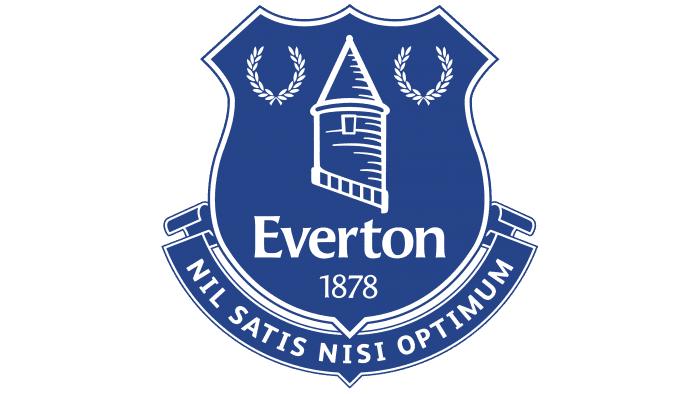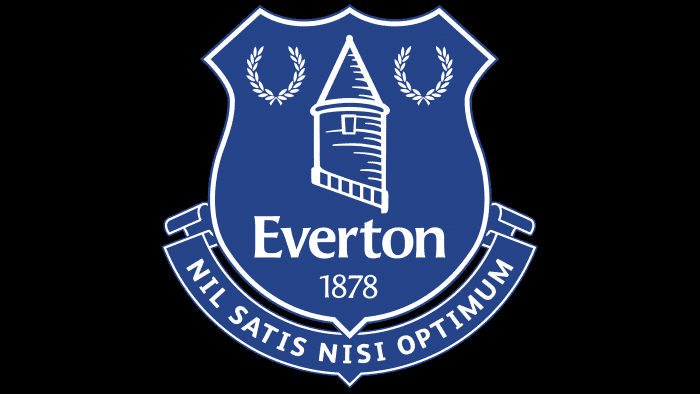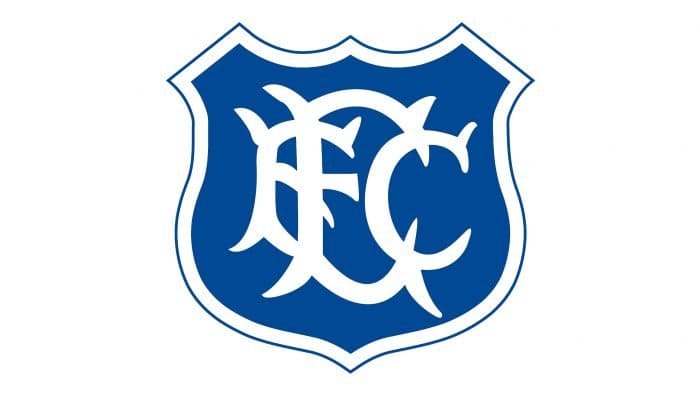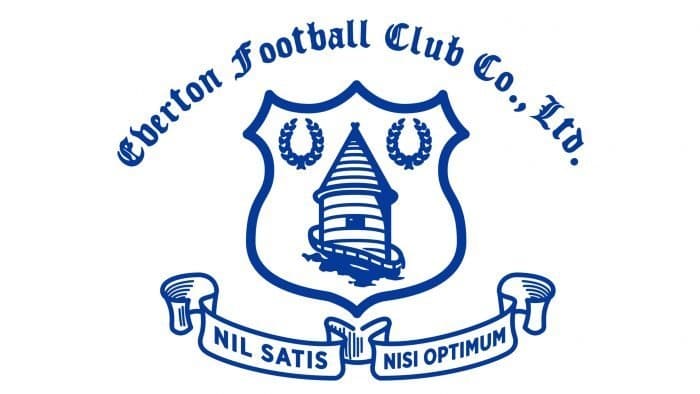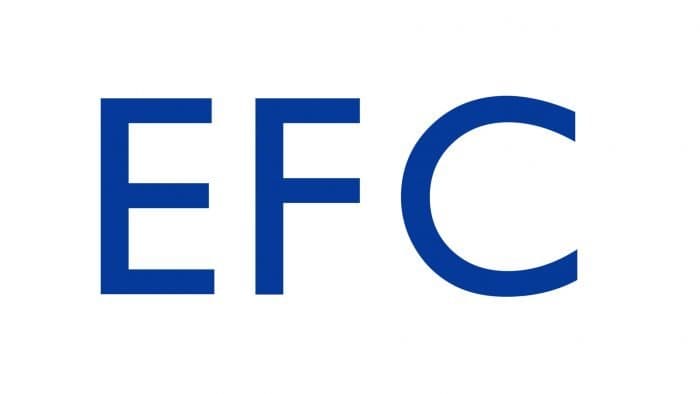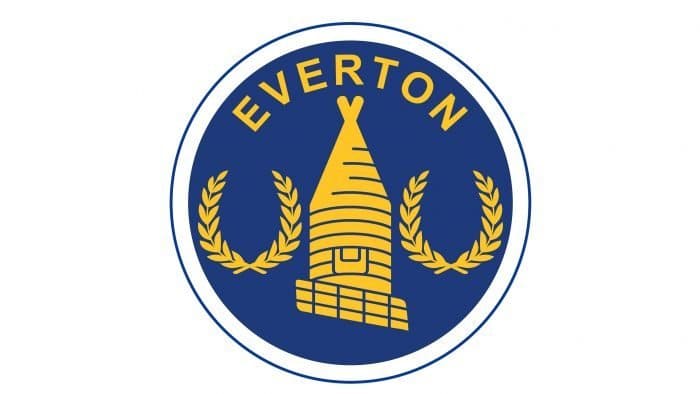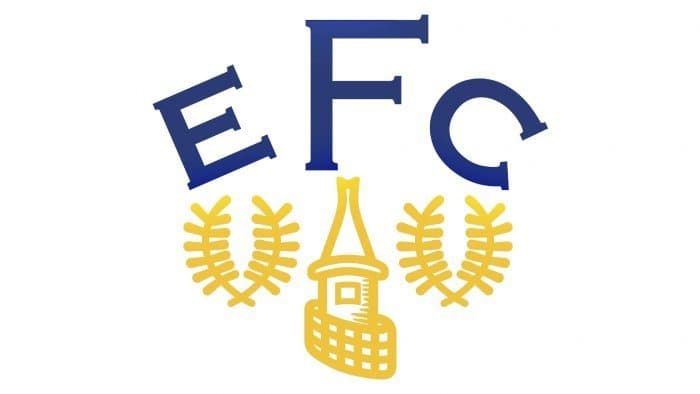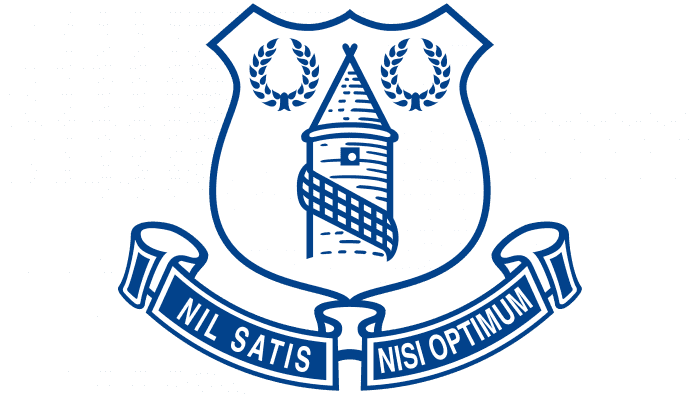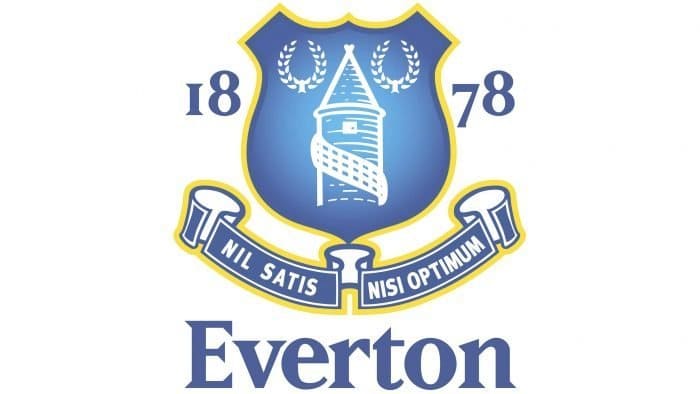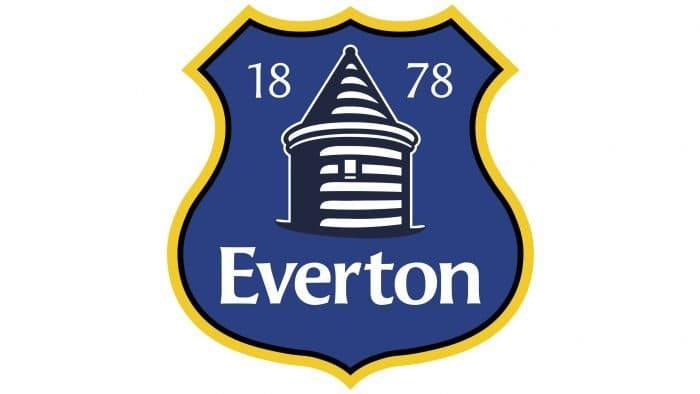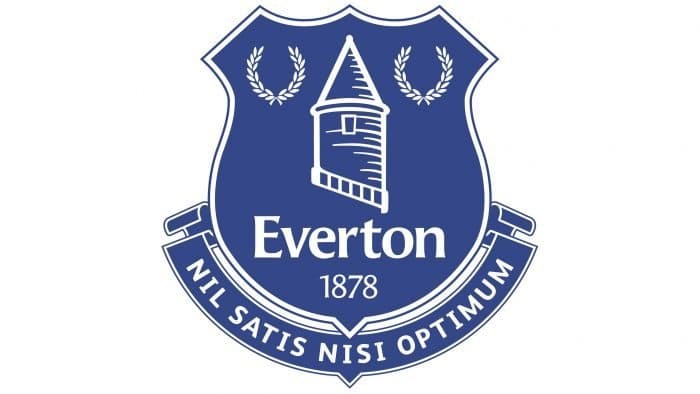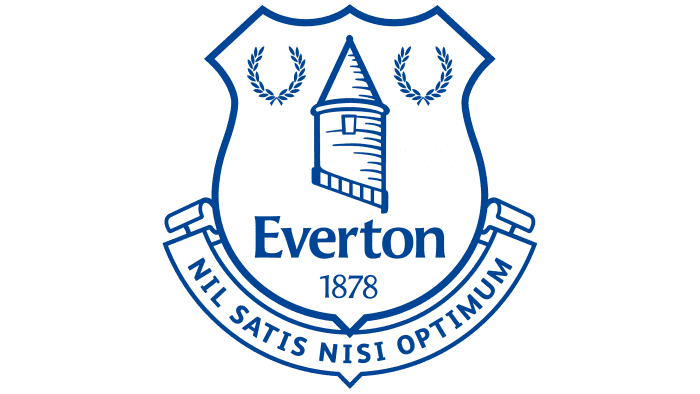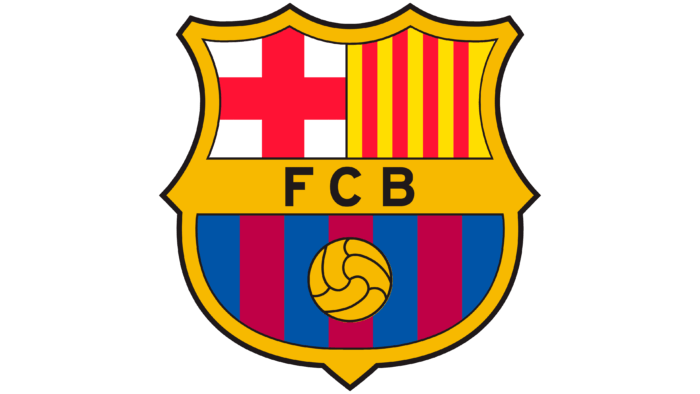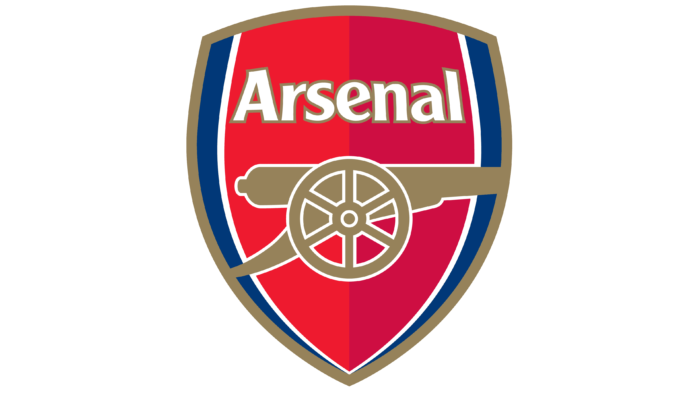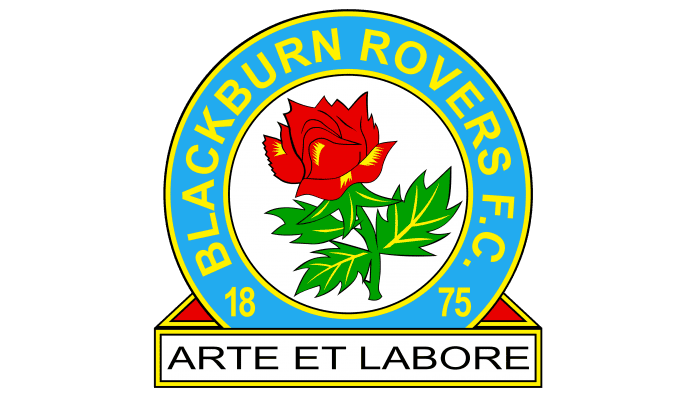The football club “Everton” got its name from the place of its foundation, and its logo features an architectural landmark of the region. This symbolizes a commitment to the foundation’s history and pride in its origin. Laurel wreaths represent success and victory.
Everton: Brand overview
| Founded: | 1878 |
| Founder: | Farhad Moshiri |
| Headquarters: | Liverpool |
| Website: | evertonfc.com |
Everton, founded in 1878 near St. Domingo’s Church, was named after this location. The reason for forming a football team was that parishioners actively played cricket in the summer and preferred football in the winter. Soon, the team was joined by players unrelated to St. Domingo’s Church, and in November 1979, the club was renamed “Everton” after the Liverpool district.
The club “Everton” has one of the most unusual nicknames in England, created by fans who often called the team “The Toffees.” According to one version, it appeared because, on match days when Everton played, Mother Noblet sold menthol candies with the club’s name on them. Now, it has become a tradition. According to another version, the nickname came from the Everton Toffee House confectionery, located near Goodison Park (stadium).
The club’s second nickname is “The Blackbird,” which arose due to the color of the alternate kit. It is also associated with another nickname, “The Blues,” the club’s primary color. The nickname “The People’s Club” is a “merit” of former head coach David Moyes, who called Everton this at a press conference dedicated to his appointment.
Fans of “Liverpool,” Everton’s main rival, gave “The Toffees” the derogatory nickname “The Bitters.” According to the club’s achievements, “Everton” is weaker than “Liverpool.” Moreover, the word bitters is a kind of antonym to the main nickname – Toffees.
Meaning and History
The first official logo of “Everton” was introduced in 1920. It consisted of intertwined white letters EFC, placed over a shield with a blue background.
At the end of the 1937/38 season, “Everton’s” secretary Theo Kelly, who later became the club’s head coach, decided to develop a new club logo. In Everton, a district of Liverpool, you won’t find a building older than Prince Rupert’s Tower, built at the end of the 18th century. Therefore, designers decided to place this image on the club’s emblem. Next to it, they added two laurel wreaths enclosed in a shield, symbolizing victory. Under the shield appeared a Latin inscription “Nil Satis Nisi Optimum,” meaning “Only the best is good enough.” The first Everton emblem was demonstrated in 1939. Later, in 1978, it appeared on players’ shirts (before that, the kit had the abbreviation EFC). The emblem has come down to our days with minimal changes.
In 1982, a simplified round version of the emblem without the shield was officially introduced. Prince Rupert’s Tower and the laurel wreaths were enclosed in a circle. This emblem lasted one season.
A new emblem, which appeared in 1983, lost the circular outline, and the tower and wreaths changed slightly. The abbreviation EFC was added.
In 1991, the club returned to the old “Everton” emblem design, created by Theo Kelly in 1939. With this version of the emblem, “Everton” performed until 2000.
In 2000, following modern design trends, the club did not radically change the beloved club logo but recreated it in blue. Designers also added the club’s founding year – 1878, splitting it into two parts and placing them on either side of the shield. Moreover, under the club’s motto appeared the inscription “Everton.” This version of the emblem existed until 2013.
On May 25, 2013, “Everton” announced a logo change, but just two days later, more than 14,000 fans signed an online petition asking management not to touch the emblem. The new emblem lacked the club’s motto, which had been presented on it since 1938, and a pair of wreaths – a long-time symbol of “Everton.” The club’s management believed their fans and, a few days later, announced that this emblem would only be used for one season. The reason was that the new version had already been launched into production.
Therefore, in 2014, the management kept its promise and changed the emblem to the new old design. The club’s name and the year of its foundation were moved to the middle of the shield, under the tower. The emblem was executed in a two-tone variant (blue and white). It looks quite stylish and attractive.
All of Everton’s emblems fall into two types. The first category includes stylized letters “E,” “F,” and “C” – standing alone or monogrammed. This is an abbreviation formed from the full name of the football club “Everton.” The second group is more numerous. It includes graphic signs with the image of the top of Prince Rupert’s tower, a heraldic shield, and two laurel wreaths. There are also combined variants where letters and a shield or letters and a tower are combined.
Some emblems feature a ribbon with the motto “NIL SATIS NISI OPTIMUM.” It is still used today, complementing the shield with symbols, nicknames, and the year the football club was founded. The current logo is very similar to the 1938 version, so “Everton” can be called somewhat conservative.
Throughout the history of “Everton,” there have been 11 logos. The club’s modern symbolism appeared in 2014. The emblem is close to the original 1938 version. The initial variant was remodeled several times but has reached our days with virtually no changes.
What is Everton?
Everton is a football club that plays in the Premier League. It is located in Liverpool and holds its home matches at the local stadium “Goodison Park.” The sports organization was founded in 1878 and became one of the founders of the English Football League a year later. In the following season, it won its first championship title.
1920 – 1931
The debut emblem was presented in 1920. The emblem features a blue shield with a double outline. In the center is a white monogram of stylized letters EFC. This is the abbreviation of the team’s full name – Everton Football Club.
1938
At the end of the 1937/1938 season, the club’s secretary, Theo Kelly, developed an emblem to decorate the ties “Everton” employees wore. It took four months to create the design. The main motif was Prince Rupert’s round tower, which once housed criminals and drunkards. Next to it are two laurel wreaths – symbols of victory.
The central elements are enclosed in a shield. The company’s name is written in the Gothic font: “Everton Football Club Co., Ltd.” Below is the Latin motto “Nil Satis Nisi Optimum.”
1972 – 1976
In 1972, the team first used a simplified logo with the abbreviation EFC on a white background. The letters are blue, written in a cursive script.
1976 – 1978
In 1976, a new version of the three-letter logo appeared. The inscription is made in a square font without serifs.
1978 – 1982
Designers reverted to the 1938 logo, modifying the style of the drawing. At the circle’s center is a blue shield with a tower and two laurel wreaths. Above it is the club’s name, “Everton F.C.,” and below it is the abbreviation EFC and the Latin motto “Nil Satis Nisi Optimum.” The green color is used for the wreaths and the outline of the shield.
1982 – 1983
In 1982, an emblem version appeared without the shield and motto. The main elements remained: Prince Rupert’s Tower, wreaths, and the inscription “Everton.” They are colored yellow and stand out against a blue circle with a white outline.
1983 – 1991
Designers simplified the previous logo, drawing the tower and wreaths. There’s no circle, and half of the space is occupied by the letters EFC.
1991 – 2000
In the 1990s, the original emblem that appeared in 1938 was recreated. The club’s name was removed. The style of the emblem’s drawing changed slightly. The white ribbon became blue.
2000 – 2013
In 2000, designers updated the color palette, adding yellow outlines and a blue gradient. On the sides of the shield, the numbers “18” and “78” appeared, denoting the year the team was founded. At the very bottom is the inscription “Everton.”
2013 – 2014
In 2013, a redesign was conducted. A version of the logo without the motto and laurel wreaths appeared, but fans did not like it—an online petition to cancel the new features collected 22,000 signatures. As a result, the changed emblem was used for only one season.
2014 – today
On October 3, 2014, “Everton” presented a choice of 3 logos. 80% of registered club members participated in the voting. The winner was the version with the iconic wreaths, tower, shield, motto, and inscription “Everton 1878”. Blue color dominates the design.
Everton: Interesting Facts
Everton Football Club is a famous soccer team from Liverpool, England.
- How It Started: Everton began in 1878, first called St Domingo FC, then changed its name to Everton the next year. They helped start the Football League in 1888, showing they’ve been around for a long time.
- Home Field: They’ve played at Goodison Park since 1892. It’s one of the first stadiums built just for soccer, and it’s filled with history and great moments.
- Nicknames: People call Everton “The Toffees” or “The Blues.” The “Toffees” name comes from a candy shop near their first field that used to throw candies to fans.
- Being First: Everton did many things, like building a big stand for fans and having a church next to their stadium.
- Championships: They’ve won the top league in England nine times, which shows that they’ve been a good team over the years.
- Cups and Europe: Everton won the FA Cup five times and a big European tournament once from 1984 to 1985, so they’ve also been successful in tournaments.
- Playing Style: In the 1920s and 1930s, they were called the “School of Science” because they played soccer smartly and creatively. This is still a big part of who they are.
- Big Rivalry: Everton’s biggest rival is Liverpool FC. Their games are exciting but friendly, with many fans cheering for both teams.
- Dixie Dean: A player named Dixie Dean is very famous because he scored 60 goals in one season, which no one has beaten yet. He’s a hero for Everton fans.
- Helping the Community: Everton does a lot to help people through charity, like helping with health and education and ensuring everyone feels included. They’ve won awards for their good work.
Everton is not just about playing soccer; they have a long history, have achieved a lot, and do a lot to help their community.
Font and Colors
The word “Everton” and the Latin phrase “NIL SATIS NISI OPTIMUM” are written in different fonts. The team’s nickname is typed in an elegant serif font similar to FF Angie DemiBold. The creator of the FF Angie family is typographer Jean François Porchez. In the motto, a bold sans-serif was used instead.
Over a hundred years, the club changed inscriptions, rearranged the laurel wreaths, and experimented with Prince Rupert’s Tower but never abandoned the color blue. Designers only periodically complemented it with green, white, and yellow. This is the most distinctive feature of all “Everton” emblems.
Everton color codes
| Polynesian Blue | Hex color: | #274488 |
|---|---|---|
| RGB: | 39 68 136 | |
| CMYK: | 71 50 0 47 | |
| Pantone: | PMS 7687 C |
